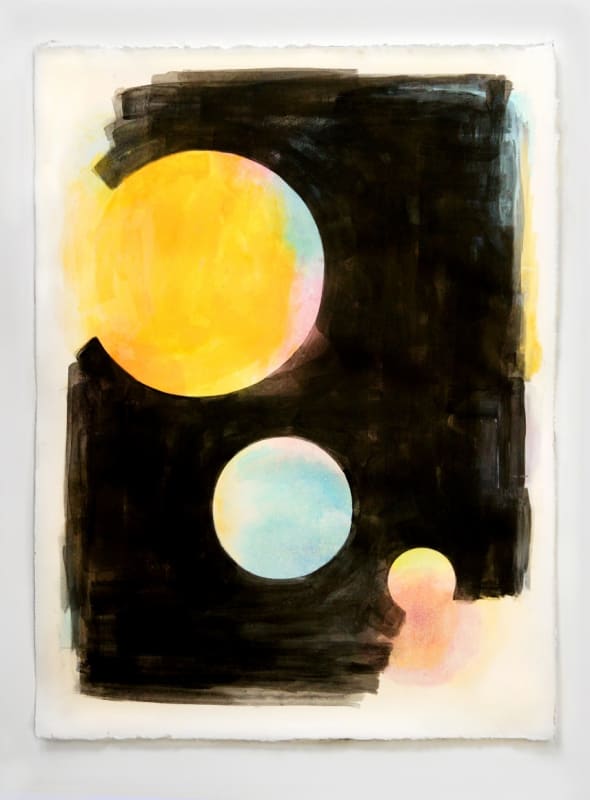This certainly seems like a time for image and text: straightforward and direct gestures for marshalling ideas, crowds, and righteous fury. So one has to stop and collect a reeling brain, full of protest acronyms and painful or ghastly YouTube footage, in order to focus on the premise of an exhibition that emphasizes, as its title suggests, “The Pursuit of Aesthetics.” Curator Andrea Belag has chosen 12 artists, including herself, as a representative sample set of abstract artists working away in quarantine. The exhibition proposes a methodology for artists in times of crisis which suggests to me the idea of “sheltering from the storm”—using aesthetic experience as a respite from the chaos and upheaval around us. Certainly, much of the art that Belag has chosen, as well as what she has made, is sensuous and atmospheric, works that mesmerize and transport. Lucy Mink-Covello’s shimmering topographies of undulating marks and Kevin Larmon’s understated, almost monochromatic, bubbling amoebic stew recalibrate the rhythms of our perception, if only for a moment. Margaux Ogden’s canvases evoke ethereal mosaics or stained glass, while Emily Kiacz weighs the randomness of loose and open, but carefully choreographed, brushstrokes against the permanence of sharp-edged shaped canvases. Although the idea of taking shelter in aesthetics might seem suspect at this moment, I think there is still value in providing a space for some to clear their thoughts and recharge their sensibilities. Nonetheless, as we plunge into examinations of formal composition, texture, and mark-making, such questions cannot help but feel foreign at this particular time.
The inclination to identify something concrete that abstract paintings may be referencing is hard to avoid, and painters either embrace this train of thought or move heaven and earth to avoid it. Belag’s own paintings Fold and Birdwatcher (all works in the show are 2020) favor a tone of pure abstraction. Her sweeping, exuberant, and hybrid brushstrokes of diverse colors extend across a pristine and empty background. Fitfully, they guide the eye along an arching path, presenting a singular but patchworked gesture, “encompassing multitudes.” Belag utilizes the varying degrees of liquidity allowed by the brush to destabilize any recognizable pattern or geometry, never mind real-world reference. Jason Stopa, with his Study for Washed Out Stage with Pin Window and Study for Garden Arch, presents two approximations of architectural structure which lure the eye with the simplest visual cues of depth, space, doorways, and fenestration. However, a sense of concrete reference ultimately remains elusive, leaving the viewer with more of a sense of what these forms are not, than what they are.
Read the full article here

